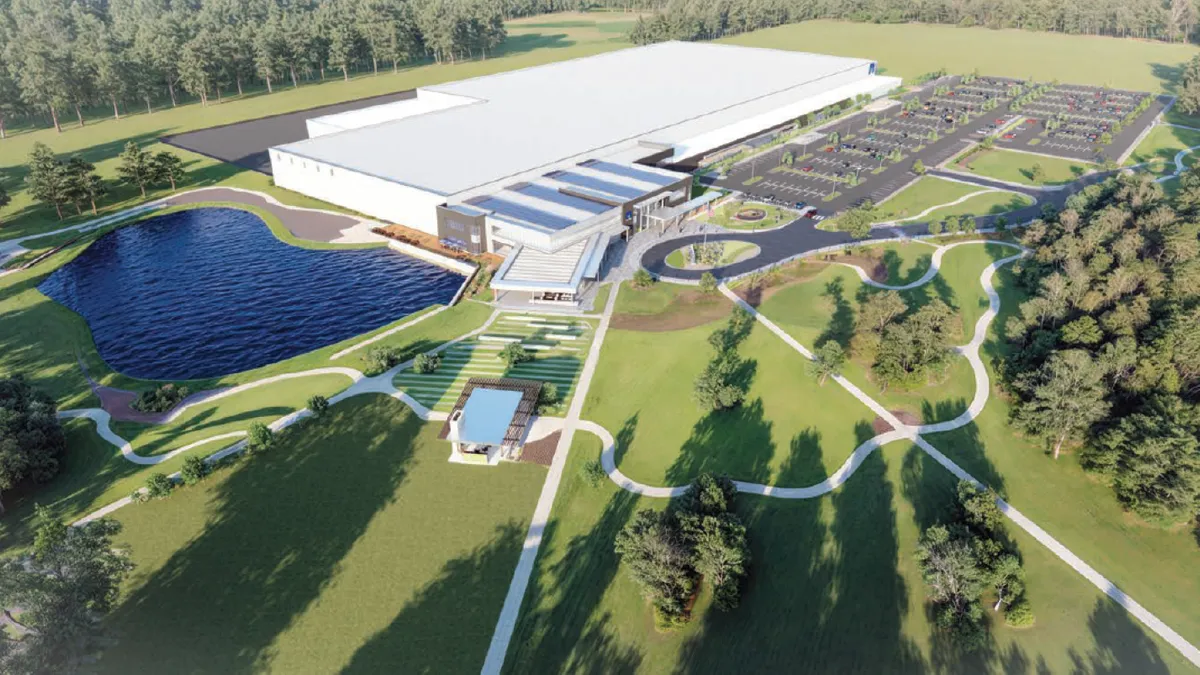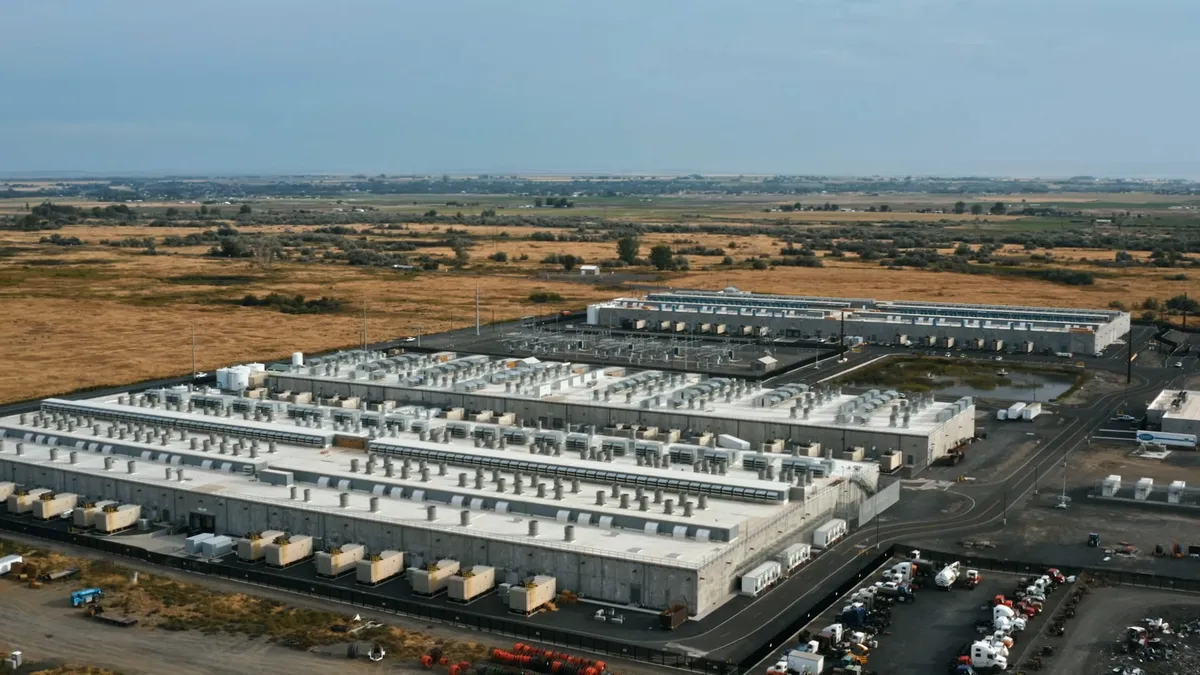Along with labor shortages, increasing regulations and lot availability problems, one issue spans all sectors of the construction industry, leaving professionals fraught with concern. That issue is productivity. Earlier this week, Brendan Bechtel, president and COO of global construction giant Bechtel, told Fortune that stagnant productivity levels in construction leave him "haunted at night."
A recent World Economic Forum study found that productivity gains in the construction industry have been "meager" when compared with the advancements of other industries during the last 50 years. The study said that even a 1% reduction in costs through technological and operational improvements would save the construction industry approximately $100 billion annually. However, the study also pointed out that no matter the technological advancements in the industry, the operational "fractured" aspects of construction would negate most, if not all, of the benefits.
Howard Ashcraft, partner at Hanson Bridgett LLP, consulting engineering professor at Stanford University and construction industry consultant, said that not only has construction not kept pace with the productivity of other industries, but it's actually fallen.
Why is construction productivity at a standstill, and what can companies do to reverse the trend?
Factors behind declining productivity
Rob McKinney, "construction app guru," consultant at JBKnowledge and co-host of a construction technology podcast, said industry productivity "is a train wreck. It's almost in the dark ages." Productivity is one of the target issues of many of his clients, McKinney said. "It's the holy grail. Everybody's chasing it, from small companies to big companies."
McKinney said one of the reasons for the industry's lack of productivity is the fact that construction today has an "inherently combative nature" compared to the early days of the industry. The functions of architects and contractors were originally combined into one design house until "about 100 years ago."
Ashcraft said, "If you have a structure where a designer designs … alone, and the people who are actually going to construct it are a different group of people, you can't get the collaboration between the two that you need."
But it's not just the nature of the construction process that creates inefficiencies; it's the contracts as well. "The way we structure contracts is inherently wrong," Ashcraft said. Contractual relationships, he noted, require people to optimize their own individual performance ahead of the project performance. "We've set up a system which is really not designed to be effective or efficient," he said.
"We set our projects up to fail by creating adverse relationships amongst all the different project participants," FieldLens CEO Doug Chambers said. "Collaboration is not the way the contracts are written, and jobs aren't set up for it. That is a risk aversion problem."
An aversion to collaboration?
This lack of productivity is due in large part to the leadership in the construction industry, according to experts. Ashcraft said there is significant emphasis on individualism in construction, and the industry is led by those who did not come from a background of collaboration. They're competitive, many come from field operations, and don’t view constant collaboration as a positive, he noted. "They're willing to take risks," McKinney said, "but they're willing to take risks for themselves."
However, collaboration is the key to productivity. Chambers said that because he is in the technology side of the business, the differences between his company culture and the general construction industry are glaring. "Our software developers are constantly collaborating and communicating with one another," he said. Much like the different parties on a construction project, his developers have specific sets of expertise, but, unlike construction, they work easily together toward one goal, he said.
Using technology to boost productivity
Chambers said another issue preventing stronger productivity is the presence of an intimidation factor when it comes to technology. He said that many of today's construction management executives never worked with desktops or laptops, however, "they do have a good relationship with mobile devices." In fact, it wasn't until the proliferation of tablets and smart phones that superintendents and field project managers had real computing power available to them.
And now that they do have that power, he said, systems need to be designed for them. Chambers said today's construction technology is more about developing user-centric designs and thinking about the people who are going to be utilizing the technology every day as opposed to building only with desired results in mind. "Construction specifically needs that," he said, "because the folks that are most impactful in terms of productivity are out in the field."
However, while McKinney agreed that mobile devices have increased productivity on construction projects overall, he said that it's still up to the superintendent to manage, track and input the correct information. There are a few products out there that are "making some headway," in jobsite productivity, he said, "but you're talking about an industry slow to change, slow to adopt new technology and slow to trust and believe in things."
McKinney said it's going to take a new influx of younger workers coming up through the ranks before the industry sees any real change, and Chambers said the path is still rife with obstacles. "There are a lot of systems in place — financial, insurance, bonding — that really make change difficult," Chambers said. "I'm not optimistic that we're going to see significant changes to the way these projects are organized in the near future."
Case study of company action
One company that is working on effecting change is Shawmut Design and Construction in Boston. Recognizing that many of their employees — while happy with their jobs overall — felt the burden of long hours and tedious commutes, the company developed a flexible work program called ShawmutFlex.
Marianne Monte, chief people officer at Shawmut, said the company now offers compressed workweeks, telecommuting, job sharing, shift sharing and part-time hours, even for field positions. Monte said the reaction has been overwhelmingly positive, and 100 employees have signed up so far.
The program, she said, also has a broad appeal. "It's not just millennials signing up for it," Monte said. All generations of workers are enjoying the benefits of working flexible hours. "We're getting the benefit out of it, they're getting the benefit out of it, and we're getting a more engaged worker regardless of age or gender." This program also assists in employee retention efforts, which boosts productivity, as there are fewer time-killing employee turnover situations. Monte said the job-sharing aspect allows employees to cross-train with other positions, contributing to the employee development aspect.
Of course, she said, there are allowances that have to be made for field employees who might have to return to the project site on a day off if the job is at a critical point, or in the case of an emergency.
While programs like Shawmut's make localized gains in productivity, Ashcraft said that in such a risk-averse environment like construction — where there is institutional resistance to change and often great fear of potential losses associated with that change — it might take an extreme situation to force the issue.
"When people are on a 'burning platform,' they're no longer risk-averse," Ashcraft said. "If you know you're going to lose (by staying on the platform), you will jump."




















